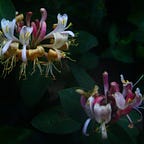Coney Island: Wild Rides And Wild Life
Coney Island has to be one of the most famous tourist spots in America for family fun by the beach. There was a time when it was the most popular amusement park in the whole country. Naturally, the bigger Disney and Universal-owned resorts took over in the 20th century as must-visit destinations for domestic and foreign tourists.
Still, with an estimated 5 million people coming to Coney Island each year, it draws people in. The place is iconic thanks to its old-fashioned seafront charm, the range of attractions, and its proximity to Brooklyn. Most people come from the wild rides, corn dogs, and strolls along the boardwalk, but it’s worth sticking around to look out for one of its animal residents.
The amusement parks at Coney Island have expanded over the years to appeal to new generations and give everyone a fun day out. In June 1884, Coney Island got The Switchback Railway. This 600ft track ran between two towers, and then the track was “switched back” to send them the way they had come. There were no steep drops or fast-paced loops — just a simple 6mph journey in the car from one side to the other. This original rollercoaster was tame by today’s standards but helped pave the way for what was to come. The island expanded over the turn of the century, with Dreamland, Steeplechase, and Luna Park offering new attractions for paying visitors. In the 1920s, the site was enhanced further by the completion of the subway connection and the 2.5-mile boardwalk.
Of course, there was a time when Coney Island was nothing like the giant amusement park it is now. This reclaimed land was once a natural landscape until it was claimed by the people of New York. It was once owned by the rabbits. There were so many here that the Dutch settlers called the island Konijn Island, and this evolved to Coney, an old English term for rabbit. Rabbit numbers will have decreased since the humans decided to build their amusement parks. You’re probably more likely to find giant plush ones available as prizes than wild ones running around. But that doesn’t mean Coney Island is devoid of animal life.
One of the most fascinating creatures that come to these shores — aside from the out-of-state tourists — is the horseshoe crab. These crabs look like creatures from another world. They actually closely resemble the face-hugger form of the Xenomorphs in the Alien series, but that is a whole other discussion. The female horseshoe crab returns to beaches in the area in May and June to lay its eggs, and nature lovers can come out to the shore at Coney Island to watch their emergence.
This crucial part of the horseshoe crab lifecycle is also important for other species in the area. The crabs will lay clusters of eggs, knowing not all will survive and make it back into the Atlantic Ocean. Many will become food for the birds, who use the area as a feeding point during their migration. Sadly, population numbers of horseshoe crabs have declined. They are harvested and used for commercial products, such as hairspray and fertilizer, to the point of overharvesting. A switch to synthetic alternatives and promotion of the horseshoe crab within eco-tourism could make a difference.
Coney Island is an important landmark in the New York tourism industry. But it doesn’t just belong to humans. As long as we can protect the natural landscape around the amusement park and support local species, we can find a balance. So, go to Coney Island for the corn dogs and the wild rides, but also make a point to head to the shore in June and look for these stunning horseshoe crabs.
